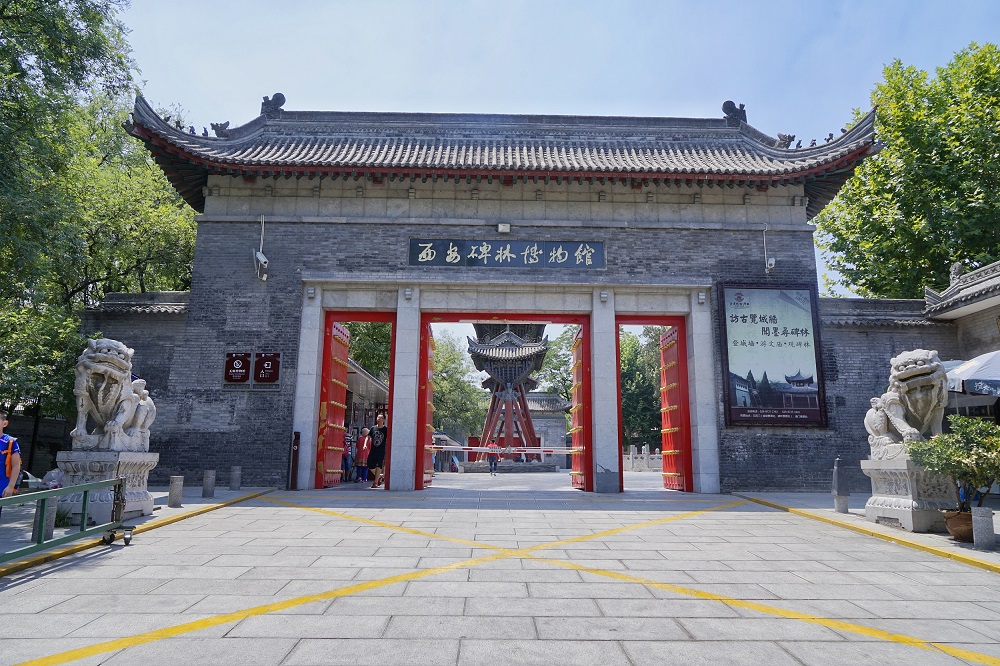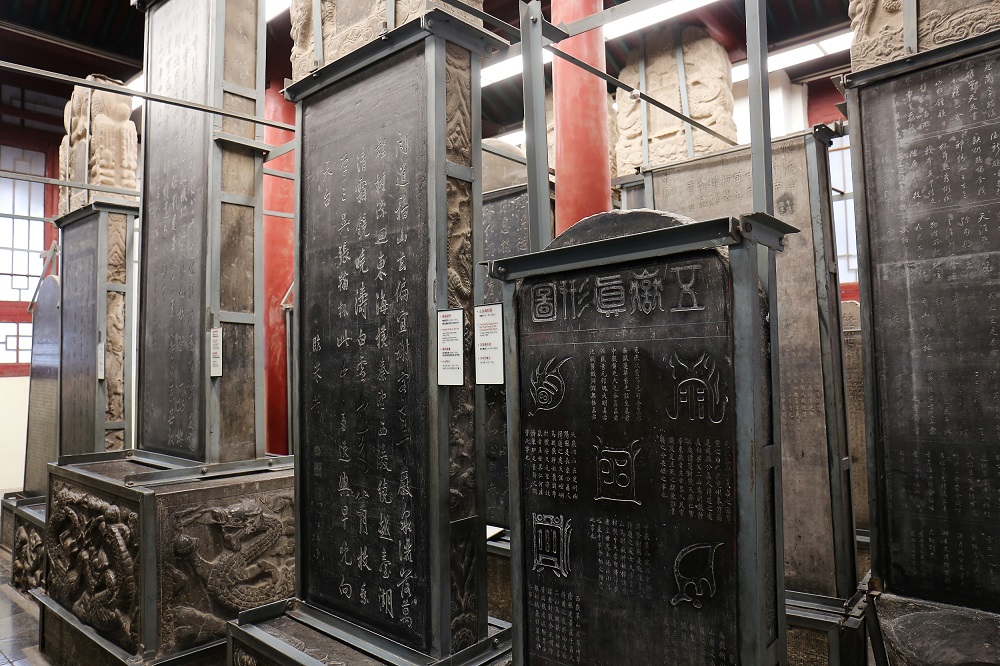Beilin Museum

The entrance of the Beilin Museum
Completed in 1944 and initially called the Shaanxi Provincial Museum, the Xi’an Beilin Museum was renamed in 1992 and designated a national top-level museum in 2008.
Covering an area of 319,000 square meters, it was built upon the Xi’an Forest of Stone Steles, or Tablets, one of the first national foremost protected cultural heritage sites, and the city’s Confucius Temple architectural complex. The history of the Xi’an Forest of Stone Steles can be traced back to 1087. Lyu Dazhong (1020-96), an official of the Northern Song Dynasty (960-1127), collected the steles of that time for better storage, establishing the prototype of today’s forest of stone steles. The collection developed into today’s scale with increasing additions and after hundreds of years of renovations.

Stone steles displayed in a gallery of the museum
The museum is dedicated to the collection, research and exhibition of the art of inscribed dynastic stone tablets and stone statues. It is mainly composed of the three parts of the Confucius Temple, galleries of steles, and an exhibition hall of ancient stone carvings.
With a collection of more than 11,000 pieces, the museum is home to a great number of precious works highlighting the development of Chinese calligraphy and stone carving arts, including the Kaicheng Stone Classics, the steles of the Xuanmi Pagoda and the Duobao Pagoda and four of the Six Steeds of the Zhao Mausoleum.










